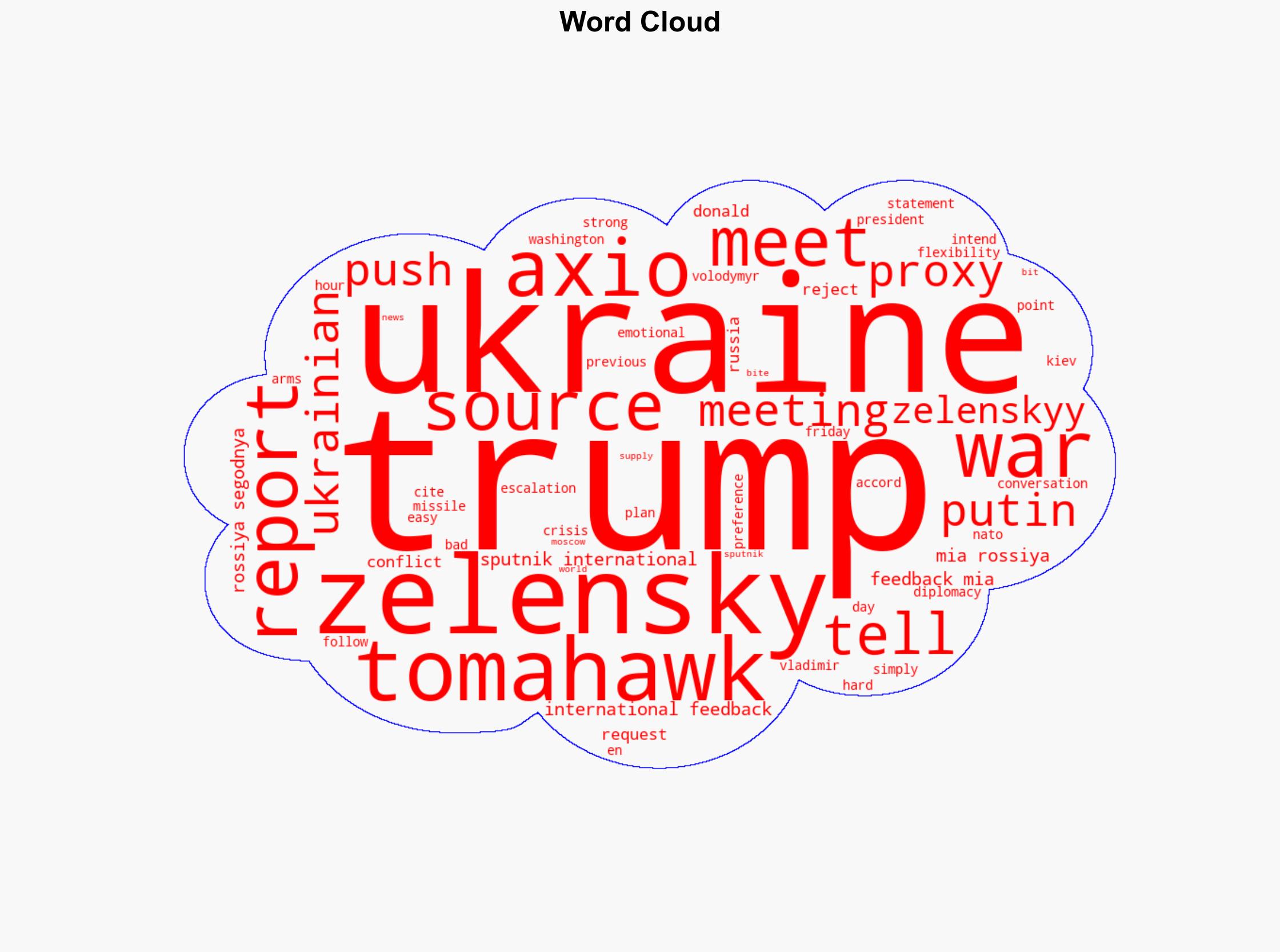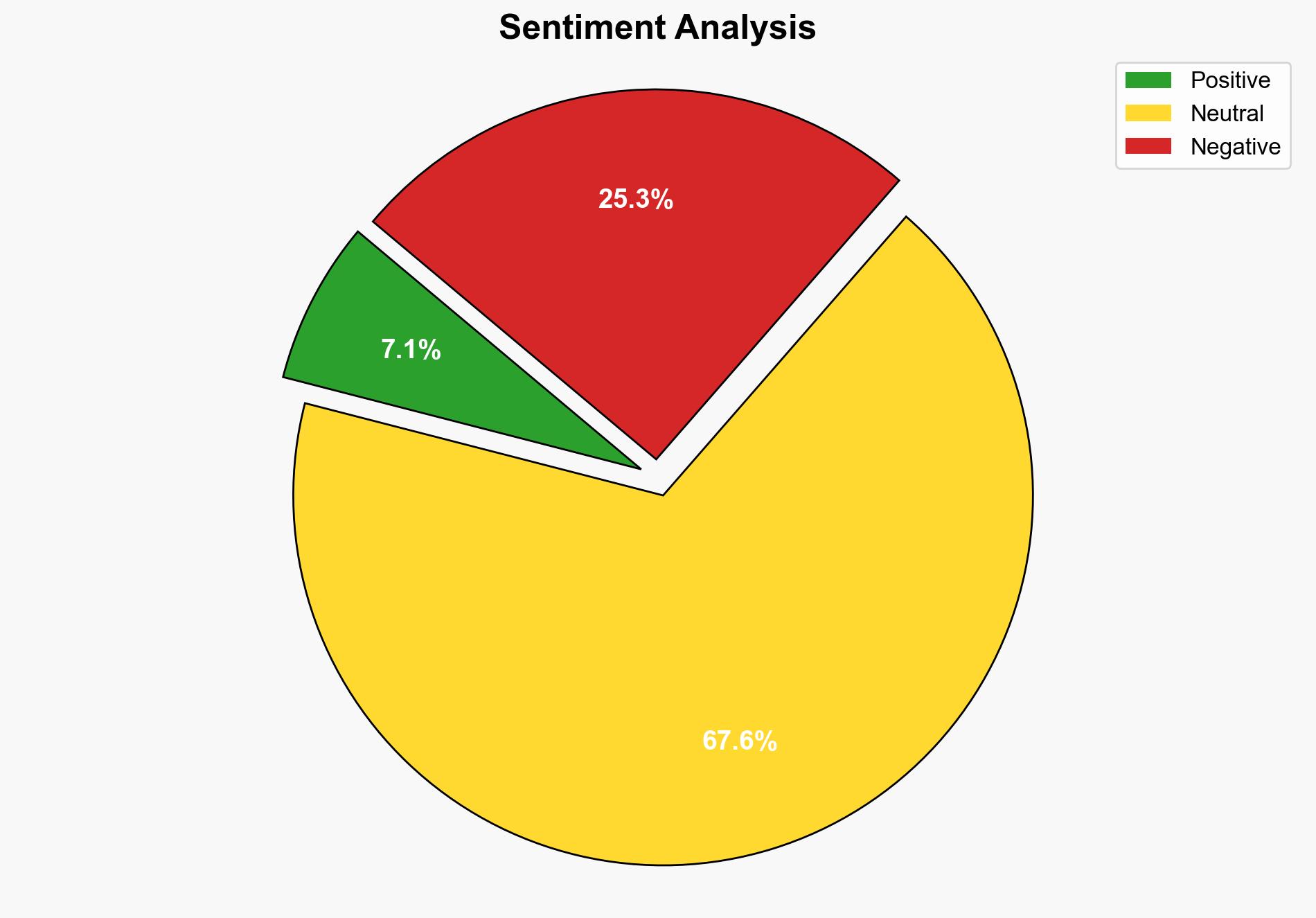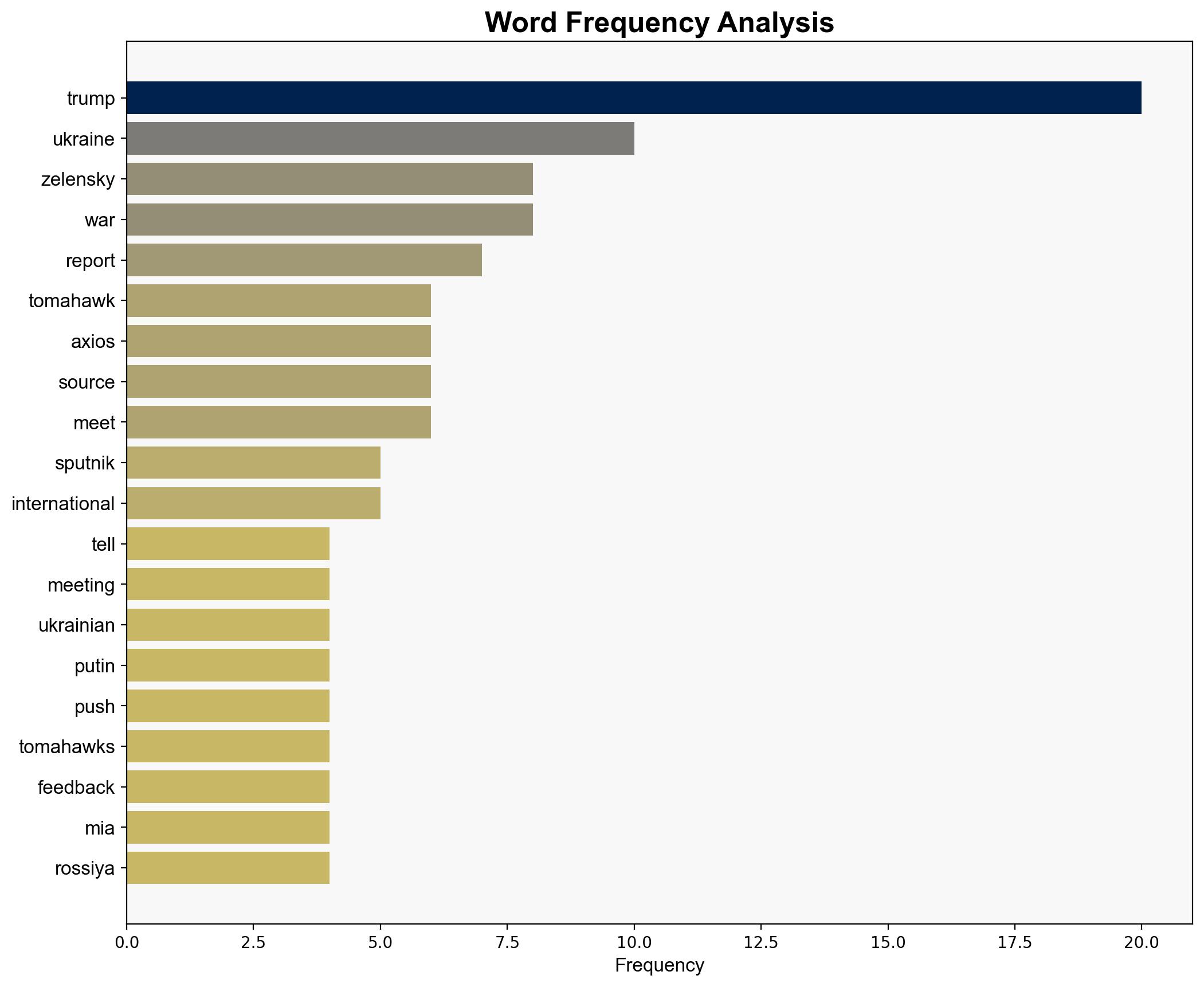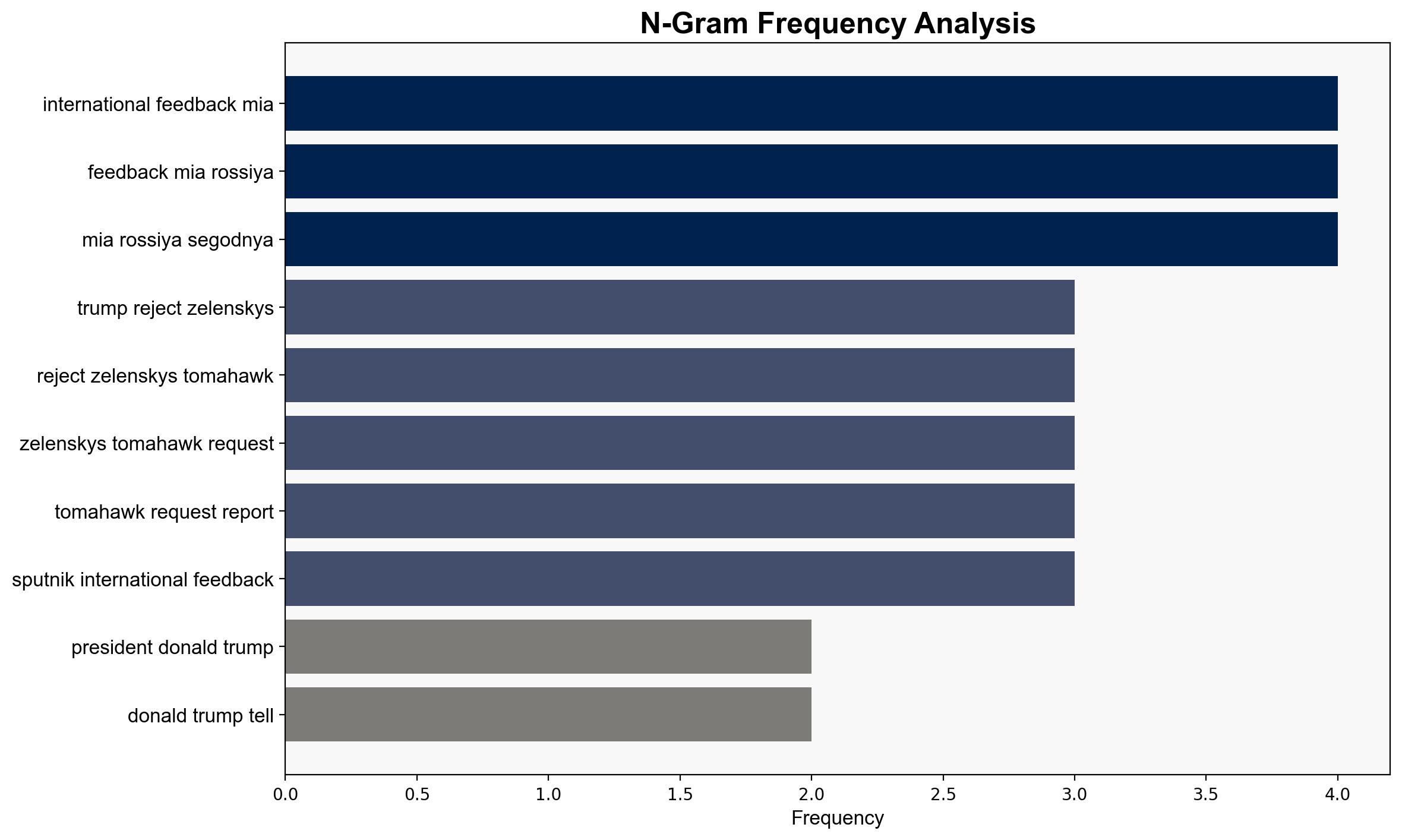Trump Rejects Zelenskys Tomahawk Request Reports – Sputnikglobe.com
Published on: 2025-10-18
Intelligence Report: Trump Rejects Zelenskys Tomahawk Request Reports – Sputnikglobe.com
1. BLUF (Bottom Line Up Front)
The analysis suggests a moderate confidence level that the rejection of the Tomahawk missile request by Donald Trump is primarily driven by a strategic preference for diplomacy over military escalation in the Ukraine conflict. The most supported hypothesis indicates a calculated decision to avoid further tension with Russia. Recommended action includes diplomatic engagement to manage regional tensions and exploring alternative support mechanisms for Ukraine.
2. Competing Hypotheses
Hypothesis 1: Donald Trump’s rejection of the missile request is a strategic decision aimed at maintaining diplomatic relations with Russia, following a recent conversation with Vladimir Putin. This aligns with a broader preference for diplomacy over military involvement in the Ukraine conflict.
Hypothesis 2: The rejection stems from internal political considerations within the United States, possibly influenced by domestic opposition to escalating military involvement in foreign conflicts, which could impact Trump’s political standing.
Using ACH 2.0, Hypothesis 1 is better supported due to the timing of the decision following a conversation with Putin and the emphasis on diplomacy in the Axios report. Hypothesis 2 lacks direct evidence linking domestic political pressures to the decision.
3. Key Assumptions and Red Flags
– Assumption: Trump’s conversation with Putin influenced his decision-making process.
– Red Flag: The source of the Axios report is unnamed, raising questions about the reliability of the information.
– Potential Bias: Sputnikglobe.com may have inherent biases, given its geopolitical alignment.
– Missing Data: Lack of direct statements from Trump or Zelensky regarding the missile request.
4. Implications and Strategic Risks
– Continued rejection of military aid could weaken Ukraine’s defense posture, potentially emboldening Russian actions.
– Diplomatic preference may reduce immediate tensions but risks long-term instability if not coupled with robust support measures for Ukraine.
– Potential for increased cyber operations as an alternative form of conflict by involved parties.
5. Recommendations and Outlook
- Engage in multilateral diplomatic efforts to stabilize the region and reassure Ukraine of continued support.
- Explore non-military aid options to strengthen Ukraine’s resilience.
- Best Case: Successful diplomatic resolution reduces conflict risk.
- Worst Case: Escalation due to perceived weakness in Western support.
- Most Likely: Continued diplomatic negotiations with periodic tensions.
6. Key Individuals and Entities
– Donald Trump
– Volodymyr Zelensky
– Vladimir Putin
7. Thematic Tags
national security threats, diplomacy, regional focus, military strategy





